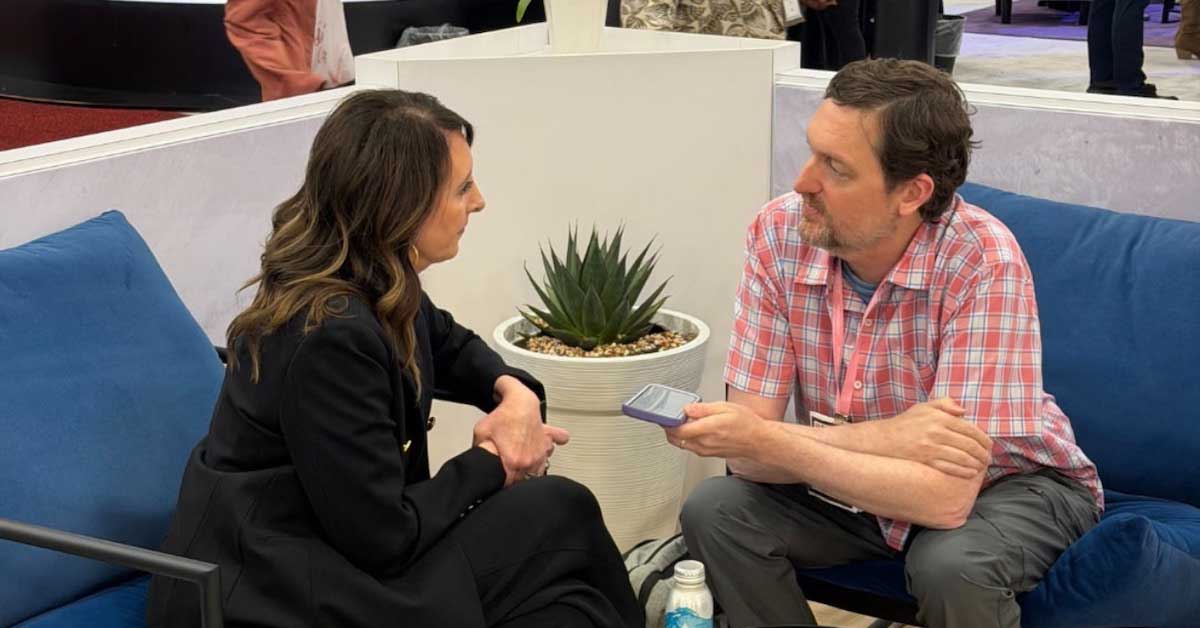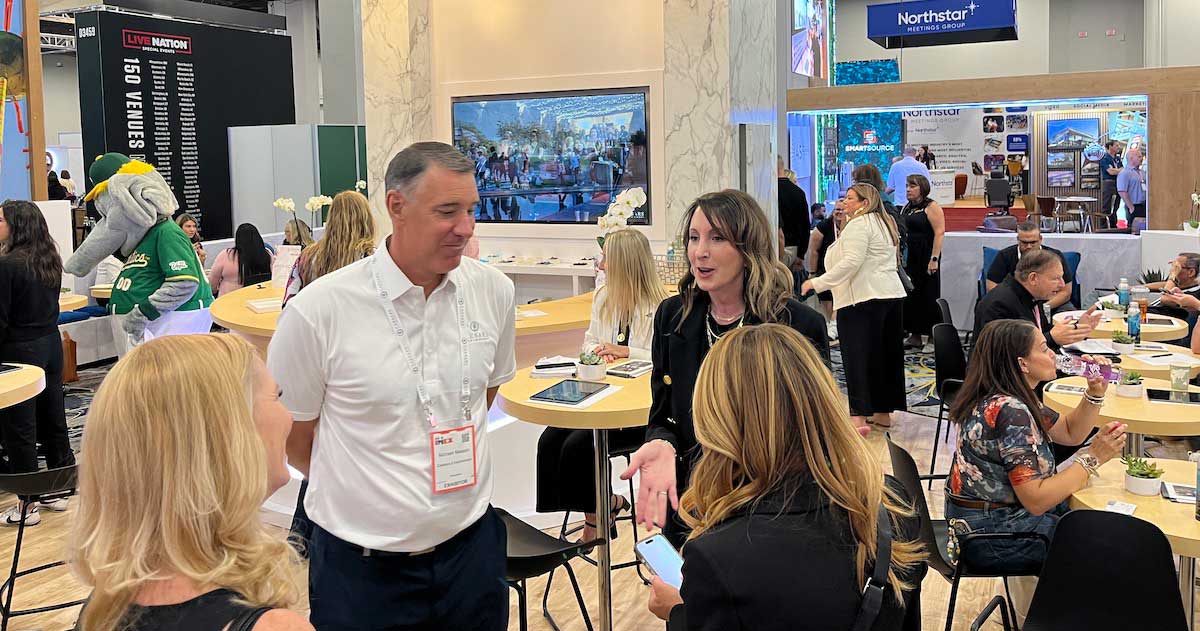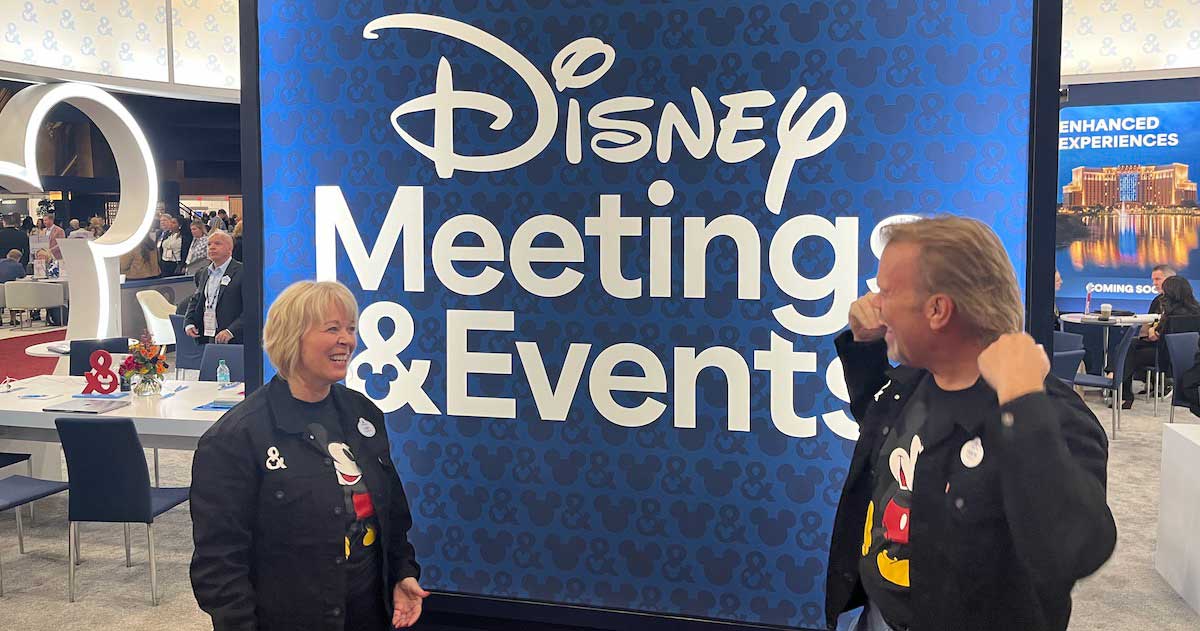This story is part of a special section from The Meeting Professional brought to you by

Many events that were due to take place in the spring or summer of 2020 had to be canceled, postponed or moved to virtual only. The pandemic was simply too widespread, and we didn’t understand COVID-19 well enough.
But our industry is resilient. And savvy organizations must move ahead knowing that we’re going to look a bit different. Face-to-face events aren’t dead by any stretch of the imagination, and they’re starting to come back. Of course, planners and venues are homing in on safety and attendee wellbeing like never before, but many of the events will also have virtual components. Our future is hybrid.
In fact, the International Association of Exhibitions and Events® (IAEE) recently announced that its Expo! Expo! Annual Meeting & Exhibition, Dec. 8-10, will be a hybrid event featuring a virtual online experience powered by Swapcard and a live, face-to-face experience in Louisville, Ky.
But the past few months have been all about virtual, with 87 percent of respondents to the latest MPI Meetings Outlook survey predicting positive growth in virtual event attendance.
We spoke with two trade show planning professionals—one whose event typically features about 400 attendees and one whose event typically features more than 40,000 attendees—about scrapping their live event plans, creating virtual events within short timeframes and what they learned in the process.
Taking Attendance
The Automotive Content Professionals Network (ACPN) Knowledge Exchange typically includes about 400 attendees and 35 exhibitors. Jessica Finnerty, CEM, manager of meetings and events for the Auto Care Association, which hosts the event, says attendance was higher for this year’s May 4-6 virtual event.
“Since the event was free to attend, naturally we saw a huge spike in registrations—nearly 800,” she says. “Of these, 645 logged on at least once, and we averaged 450 to 500 each day.”
InfoComm 2020 Connected was held June 16-18, with on-demand sessions and exhibitor showcases available through Aug. 21. Rochelle Richardson, CEM, senior vice president for host organization AVIXA, says the virtual event attracted 25,124 registered attendees and 494 exhibitors—numbers she was happy with.
“As the largest pro AV technology expo and conference in North America, the annual InfoComm USA brings AV professionals from across the world to explore new products, learn about technology and market trends and build new business relationships—and it attracts more than 43,000 attendees,” she says. “We created InfoComm 2020 Connected as a first-time online event and did not intend to try to recreate a one-to-one comparison, but rather create a unique online experience creating a sense of community for the pro AV industry.”
Successes & Tips for First Timers
Finnerty was surprised by the success of Knowledge Exchange sponsorship sales, especially considering the uncertainty that surrounds something new.
“When we announced the switch, it was still fairly early in the pandemic and most audiences were still somewhat wary of the ‘virtual event’ concept,” she says. “But we were able to sell most of the opportunities that we made available, despite the uncertainty as to how the event was going to perform.”
The success story of InfoComm Connected included high-caliber content within a compressed schedule and the overall team effort, according to Richardson.
“When we announced the switch, it was still fairly early in the pandemic and most audiences were still somewhat wary of the ‘virtual event’ concept.”
“The AVIXA InfoComm global teams demonstrated the importance of cross-functional collaboration, effective communication and teamwork in planning our first virtual/online event,” she says. “Whether it was that this was a new type of event for us all or working remotely, the accomplishments and learning experienced as a team is a real highlight. It has created opportunities to share our key learnings with the pro AV and exhibitions industries.”
Richardson says time was ultimately the biggest challenge that her team faced, and in addition to giving yourself as much runway as possible, she says it’s also critical to know the voice of the customer.
“If it is your first online event, while this is not based upon statistical data, I would strongly encourage you to allow more than 60 days to plan,” she says. “An online event requires proper staff support to provide customer service leading up to, during and after the event. I would [also] encourage you to keep the voice of the customer first. You should plan to conduct research or surveys to capture feedback from attendees and exhibitors and build your program based on that feedback.”
Engagement & Fun
Virtual events—or really, anything in the virtual world—can often seem impersonal since most of us are used to face-to-face interaction. Richardson says InfoComm Connected was able overcome this challenge through an AI matchmaking feature allowing attendees and exhibitors to network.
“[It] presented a list of recommended exhibitors to attendees based on registration demographic responses,” she says. “We recognized networking as an important area to focus on to expand networking opportunities for attendees and exhibitors.”
Finnerty says heavy promotion of the event app was key to ensuring Knowledge Exchange attendees enjoyed themselves and felt engaged.
“The platform we were using didn’t have an engagement feature, so we had to try and drive people to use the social features of our separate event app,” she says. “We promoted it throughout all of the presentations and tried to incorporate games and giveaways to encourage folks to engage with one another.”
Your Trusted Resource: Coronavirus Updates and Education
Since the dates of the Knowledge Exchange covered both May the Fourth (when Star Wars fans around the celebrate their favorite franchise) and Cinco de Mayo, Know Before You Go emails “had some silly things like Star Wars origami and margarita recipes,” Finnerty says. “We also included a few funny videos and social posts from the staff and planning committee to help keep people happy and engaged.”
Participant engagement was directly rewarded during coffee breaks.
“During each coffee break we randomly selected a few attendees who had been engaging in the chat to win gift cards courtesy of the sponsor,” Finnerty says. “We would announce the winners in the chat so that all of the attendees could see. It definitely didn’t replace the promo products [of a live show], but it did help with connecting exhibitors to attendees that they didn’t necessarily know.”
Feedback & Future Plans
Finnerty notes that some attendees said they actually prefer the virtual option, and hybrid options will now be considered going forward.
“While there is a fear about possibly poaching in-person attendance, there is an understanding that hybrid options allow us to reach a wider audience and ultimately serve our community better,” she says.
Richardson says that the customer base was grateful to AVIXA for the ability to participate in an event held during the original trade show dates, and varied responses from attendees and exhibitors noted valuable content and convenient access to on-demand content.
“We recognized networking as an important area to focus on to expand networking opportunities for attendees and exhibitors.”
“We are evaluating less-than-favorable responses from both audiences to make necessary modifications to any future online programs,” she says.
The go-forward strategy for AVIXA and InfoComm will include digital and online enhancements, Richardson says, but an in-person trade show at the Orange County Convention Center in Orlando is being planned for June 2021.
“We are finalizing the InfoComm 2021 trade show strategy, which includes determining a hybrid model or other digital offerings,” she says.
Training Course Helps You Prepare for Biohazards
IAEE has teamed with ISSA, the worldwide cleaning industry association, to help exhibitions and events professionals safely and effectively return to the face-to-face business environment amid the challenges presented by COVID-19, as well as other infectious diseases, through a training course designed to prepare for, respond to and recover from biohazards in the workplace.
The GBAC Fundamentals Online Course teaches participants the principles behind infection and contamination control measures for infectious disease outbreak situations such as the novel coronavirus (SARS-CoV-2). The length of the course is approximately two to three hours, and some of its key aspects include the following.
· Preventative, response, infection control and contamination control measures to known or potential infectious disease outbreak situations.
· Importance of proper cleaning and disinfection for health.
· GBAC protocol for response and remediation.
· Use of personal protective equipment (PPE).
· Cleaners and disinfectants based on the EPA’s Emerging Viral Pathogens Guidance in the United States.
Individuals who successfully complete the course within 30 days will receive a Certificate of Completion from the Global Biorisk Advisory Council (GBAC), a division of ISSA.
The course is offered in English, Spanish, Chinese, Italian, Portuguese and Polish. Through the IAEE Referral Program, the cost for both IAEE members and non-members is US$150. To receive this special pricing, enter referral code IAEE2020 upon checkout. Learn more and enroll in the course.







